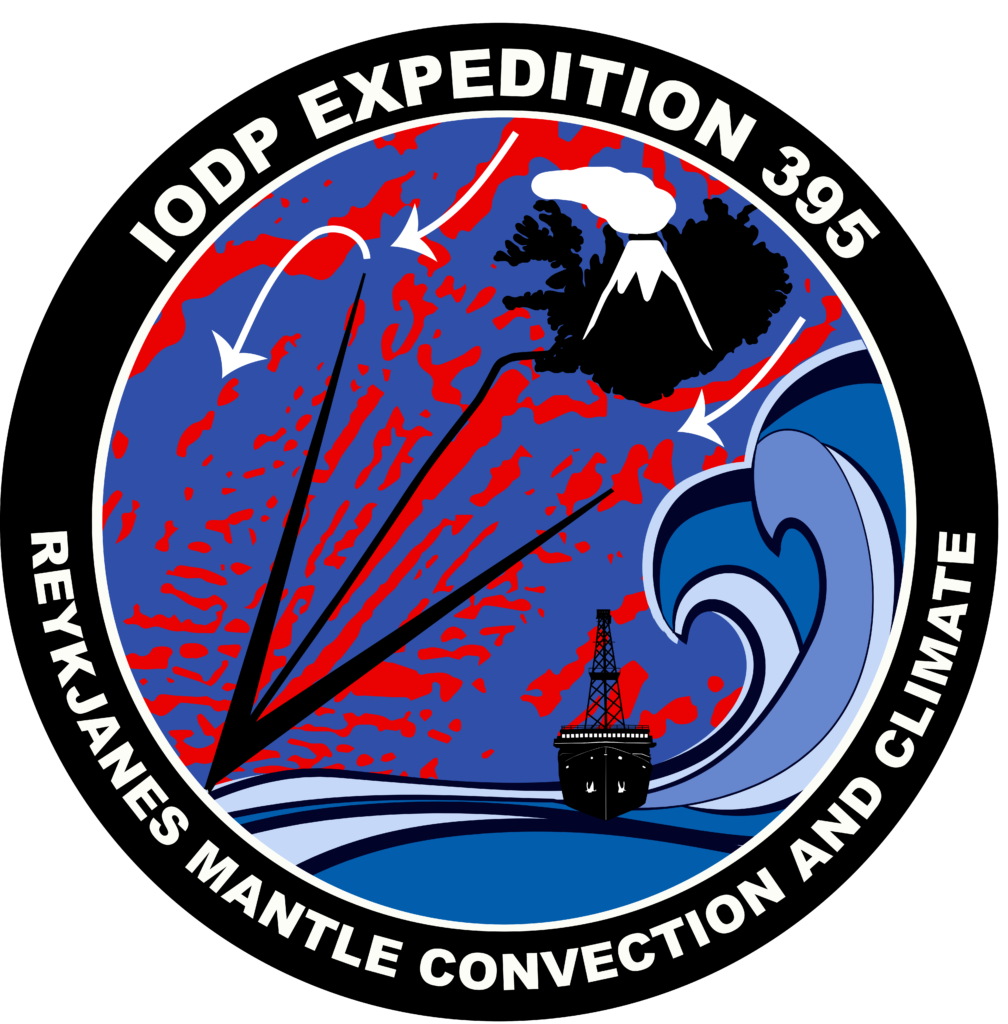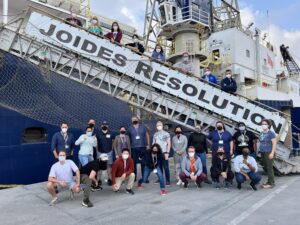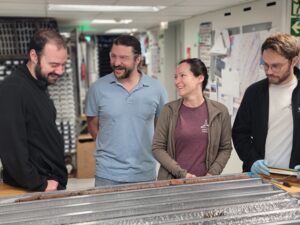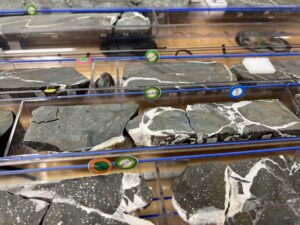
Expedition 395 is a Wrap; The Discoveries are Just Beginning!

Expedition 395 began in Ponta Delgada, Portugal on the 12th of June 2023 and will finish in Reykjavik, Iceland on the 12th of August 2023. The objectives of this expedition were threefold: to explore the formation of the V-shaped ridges and troughs which are visible on the ocean floor south of Iceland, to discover the dynamic history of the oceanic gateways between the Norwegian Sea and Arctic Oceans and the North Atlantic, and to investigate the changes in hydrothermal fluid and basalt alteration over different types and ages of crust. The sites chosen for this expedition had an ideal combination of ocean spreading at the Mid-Atlantic Ridge, Iceland Plume interaction and the rapid accumulation of sediments via North Atlantic gateways.
 Expedition 395 was preceded by Expedition 384 (engineering testing) and Expedition 395C that was run during strict COVID-19 protocols in 2021 without a science party onboard. As a result, the scientists from this expedition have been actively working toward these three objectives for more than three years! As a result of Expeditions 384, 395C, and 395, scientists have over 400 m of oceanic basalt and over 5.8 km of sediment to examine.
Expedition 395 was preceded by Expedition 384 (engineering testing) and Expedition 395C that was run during strict COVID-19 protocols in 2021 without a science party onboard. As a result, the scientists from this expedition have been actively working toward these three objectives for more than three years! As a result of Expeditions 384, 395C, and 395, scientists have over 400 m of oceanic basalt and over 5.8 km of sediment to examine.
After coring multiple holes along a transect through the Gardar and Björn sediment drifts and using data from Expeditions 395C and 384, Expedition 395 scientists were able to correlate complete sequences of sedimentary history through key Pleistocene and Pliocene Periods (roughly 5 million years ago). The newly drilled site off the east coast of Greenland on the Eirik drift provided scientists with tantalizing views of never-before-seen structures from this area and provided clues about sedimentation in the dynamic cycles between glacial and interglacial periods.


They will also provide information about how circulation through the Denmark strait has changed as a result of the action of the Iceland mantle plume. At the Eirik Drift, Expedition 395 drilled the second deepest hole by the JR (1367 m) with only one coring drill bit! This site also provided the deepest sedimentary microbiological sample from the Atlantic Ocean. This sample and the others taken will be used to infer environmental conditions of the sediment, nutrient cycling, and the sediment-water interactions throughout the sedimentary profile.
In addition to sedimentary records, Expeditions 395, 395C, and 384 retrieved basalt cores that provide insights into the formation of the seafloor in and around the V-shaped ridges and troughs from which they were taken. Determination of the chemical composition of the basalt will indicate the conditions under which the ocean crust formed and the role that the Iceland mantle plume played in the area’s unique morphology. Highly altered basalts will shed light on the interactions between these rocks and the surrounding hydrothermal fluids and sediments. The science party will have much work to do post-cruise to continue to sample, collate, and examine all of the data that they have gathered.